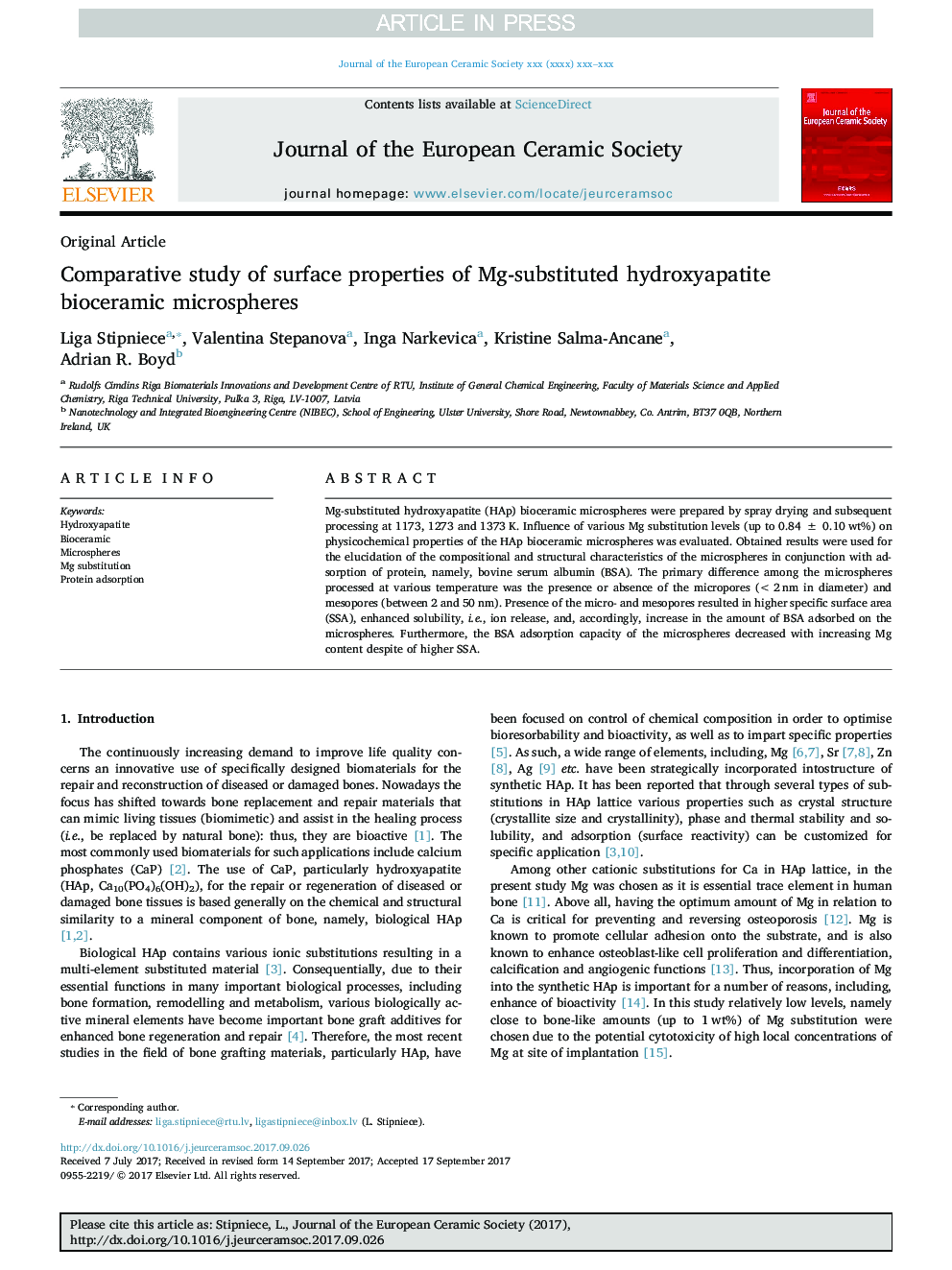| Article ID | Journal | Published Year | Pages | File Type |
|---|---|---|---|---|
| 7898836 | Journal of the European Ceramic Society | 2018 | 8 Pages |
Abstract
Mg-substituted hydroxyapatite (HAp) bioceramic microspheres were prepared by spray drying and subsequent processing at 1173, 1273 and 1373 K. Influence of various Mg substitution levels (up to 0.84 ± 0.10 wt%) on physicochemical properties of the HAp bioceramic microspheres was evaluated. Obtained results were used for the elucidation of the compositional and structural characteristics of the microspheres in conjunction with adsorption of protein, namely, bovine serum albumin (BSA). The primary difference among the microspheres processed at various temperature was the presence or absence of the micropores (<2 nm in diameter) and mesopores (between 2 and 50 nm). Presence of the micro- and mesopores resulted in higher specific surface area (SSA), enhanced solubility, i.e., ion release, and, accordingly, increase in the amount of BSA adsorbed on the microspheres. Furthermore, the BSA adsorption capacity of the microspheres decreased with increasing Mg content despite of higher SSA.
Related Topics
Physical Sciences and Engineering
Materials Science
Ceramics and Composites
Authors
Liga Stipniece, Valentina Stepanova, Inga Narkevica, Kristine Salma-Ancane, Adrian R. Boyd,
